The recent pandemic has shined a spotlight on the healthcare industry. Nurses, doctors and other healthcare professionals were facing, and many continue to face, high-stress environments — simultaneously attempting to reconcile patient overflow and patient care.
With information, news, and opinions, some people can have a hard time finding appropriate care or medical services. The aim of implementing SEO for a healthcare or medical practice facility is to provide these establishments with higher quality patients who are a good-fit for your products or services. Identifying and being targeted in the approach allows medical practices, who operate without many extra hands, to cut down time on qualifying patients while providing a stream of candidates.
This blog post aims to answer and provide guidance to the following topics:
- Building an SEO Foundation
- Step-By-Step Healthcare SEO Guide
- Ranking Factor Overview
Talk to an SEO expert about your specific healthcare marketing needs
Healthcare SEO Strategy Foundation: 4 Focus Areas
You cannot build a sturdy house with a weak foundation. SEO is a long term play but one that will pay off in the long run. The key point I want to focus on is healthcare personas and website usability. I’m going to say it again just so we’re all clear: PERSONAS & WEBSITE USABILITY.
Once these are complete you can move on to the next stage in the process, creating relevant content to generate highly qualified patients.
1. Build & Understand Your Primary Persona
Building and understanding who you’re communicating to seems like a step many wouldn’t miss. Time and time again I am met with a team looking for more qualified patients who haven’t defined who that person is. Many companies benefit from speaking with long standing customers or to their sales team to get some insights on the people they commonly sell and communicate with.
You should aim to ask/understand the following topics:
- What’s important to this person?
- What are their pain points when trying to solve their problem?
- What actions/health changes have led them to this stage?
- Who are the people involved in this decision making process?
- How old are they?
- How comfortable are they with technology?
- What is their primary goal, secondary…?
2. Understand Website Usability Friction
Depending on how you answered the above questions, your website might need to be adjusted, overhauled or blown up and start from scratch. Your customers are complex and they deserve a customized experience made to fulfill their needs. We want to make it easy for them to find you, raise their hand when they need help, and optimize their path to resolution.
Conversion Rate Optimization
If you’re failing to convert on the traffic you’re already generating it’s likely your site doesn’t offer enough conversion opportunities or relevant/valuable offers. Understand where you can add in calls to action for your users to move themselves down the funnel instead of you trying to do it manually.
Allowing people to self-identify what their needs are and where they are in the funnel will drastically improve your conversion rate and will leave your patients feeling satisfied quicker.
3. Perform Targeted Keyword Research
Look back to your personal work. If everything here is still correct and true you should be able to tie your persona’s pain points to targeted keywords that you can use to frame blog content around. You should aim to have focused campaigns that aim to cover a topic holistically. If you have a particularly difficult and saturated market to work in, being very specific and selective with your keyword targeting is going to make or break your initiative.
4. Provide Value & Grow With Content
Pillar page and cluster models are my favorite when it comes to content models not just because it’s what HubSpot preaches, or what my SEO mentor taught me — I’ve seen it work. Time and time again it has proven true and it takes truly targeted and specific efforts.
Executing the content this way attempts to build topical authority in the area you’re trying to grow due to the bi-directional linking between pillar and cluster topics. As your content naturally accumulates more authority and elevates in rankings, it will acquire backlinks. These backlinks are a signal to Google indicating others are referencing your work when conducting their own research.
Blog Content Creation
Editorial Execution Strategies differ from company to company but ideally, all content marketing assets should have an associated template, naming convention, folder structure, review process, etc. Keep this organized as this is often the first thing to fall out of regulation.
Each blog post should first start with an SEO brief to inform the writer of important SEO signals that should be placed throughout the content. There are elements we can identify through the brief creation process that can give us an edge.
Right before we hit the publish button, an SEO-inclined eye should give it the final sign-off so we give our content the best send-off we can. This is just to ensure we get the best possible early results/signals so we can adjust if needed or leave it alone.
Service & Product Page Creation
Much like blog creation, you need to have proper product or service pages that align with your patients goals or end results they’re looking for. These keywords are likely very targeted, competitive and hard to rank for. In my experience, successful service or product page ranking is accomplished by funneling authority from top-level pages or authoritative blog content back to these pages.
6 Steps to Healthcare SEO
1. Leverage Google My Business & Reviews
Depending on the type of practice of healthcare services you offer, local SEO is either going to be your best friend or maybe just a close cousin. What does he mean by that? Let me tell ya’.
If you are attempting to grow your chiropractic business, you’re likely going to need to lean heavily on local SEO as your market is the people who are able to visit your physical location. For a company looking to sell their hearing aids online, they won’t necessarily need to worry about local SEO as much as their audience can be from anywhere.
Both of these scenarios still require a great deal of research and analysis to provide you with the best results. If you are attempting to drive both traffic and new patients/clients. You’ll need to focus on the information that follows. Your local business listing can make a large impact on your local performance. Consider the following. Below is an example search on Google for, “Healthcare Consulting.”
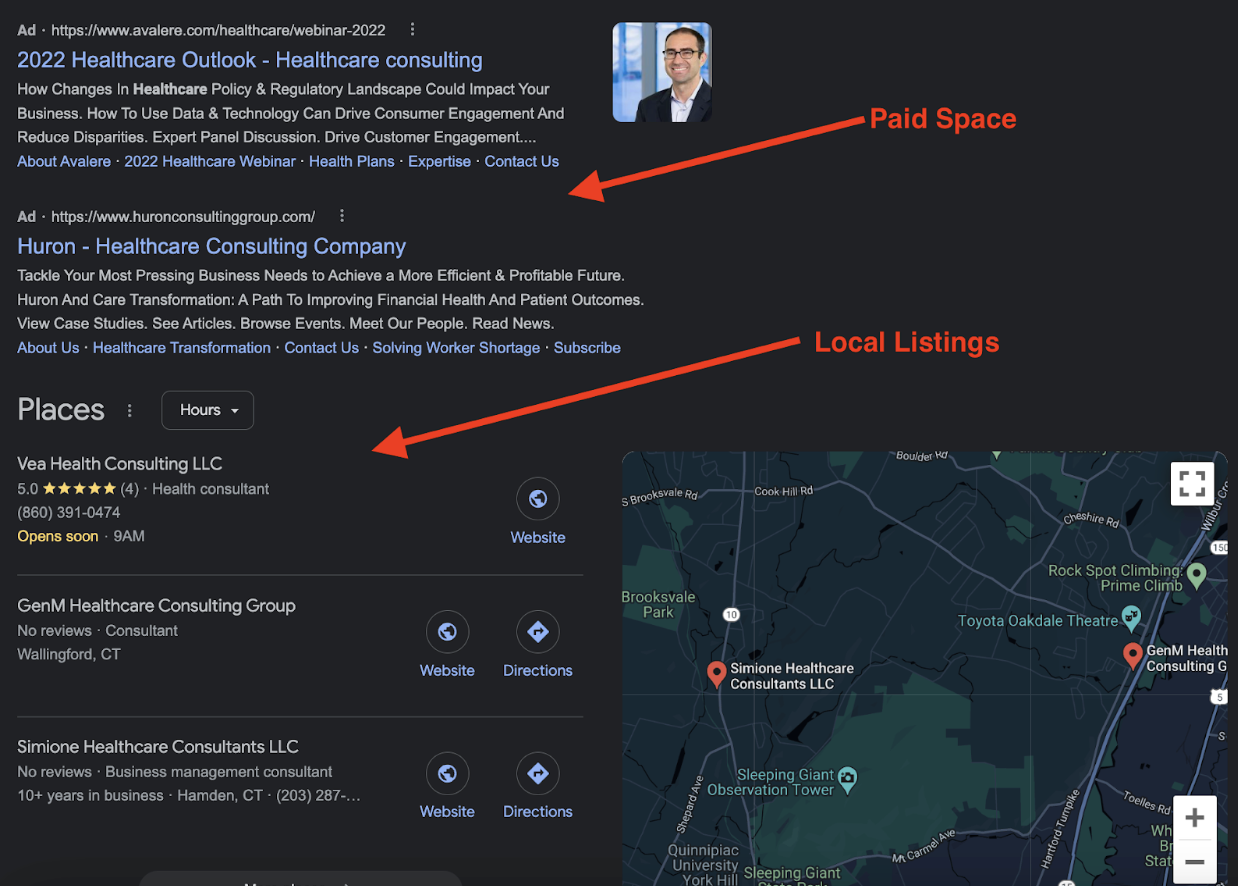
The first result to populate is the paid advertisement. After the paid section, local map packs are populated and appear to be ranked by number of reviews. Getting to organic results is becoming a longer and longer scroll which results in no-click results. Having a prominent business listing is going to provide your business additional visibility.
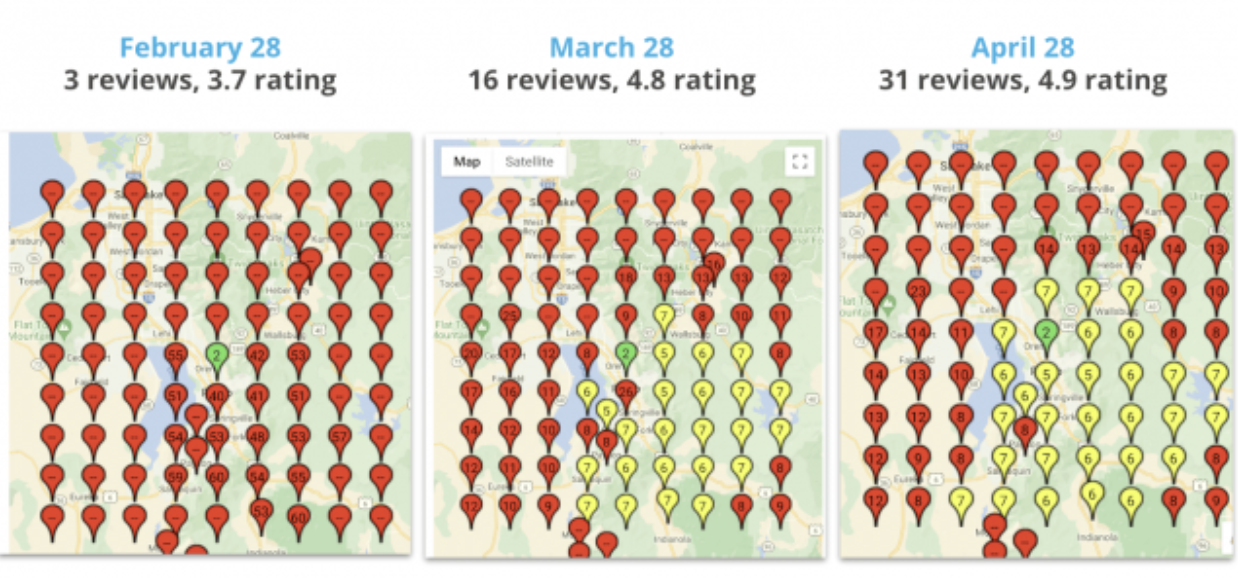
The image above from business listing analysis compares the alignment of their listing to the number of actions taken on their option. By proper alignment, this particular business saw a large increase in clicks to their website and subsequent calls. Alignment is key.
2. Perform a Technical SEO Audit
Before you head out on your SEO journey, you’ll want to make sure you have a concrete foundation to build on rather than sand. This means making sure your site is clean and clear of any technical issues.
You want to make the site easy to navigate for both search engines and users. Removing any dead ends or pointless redirects will only improve the overall site health and ease of use for the user.
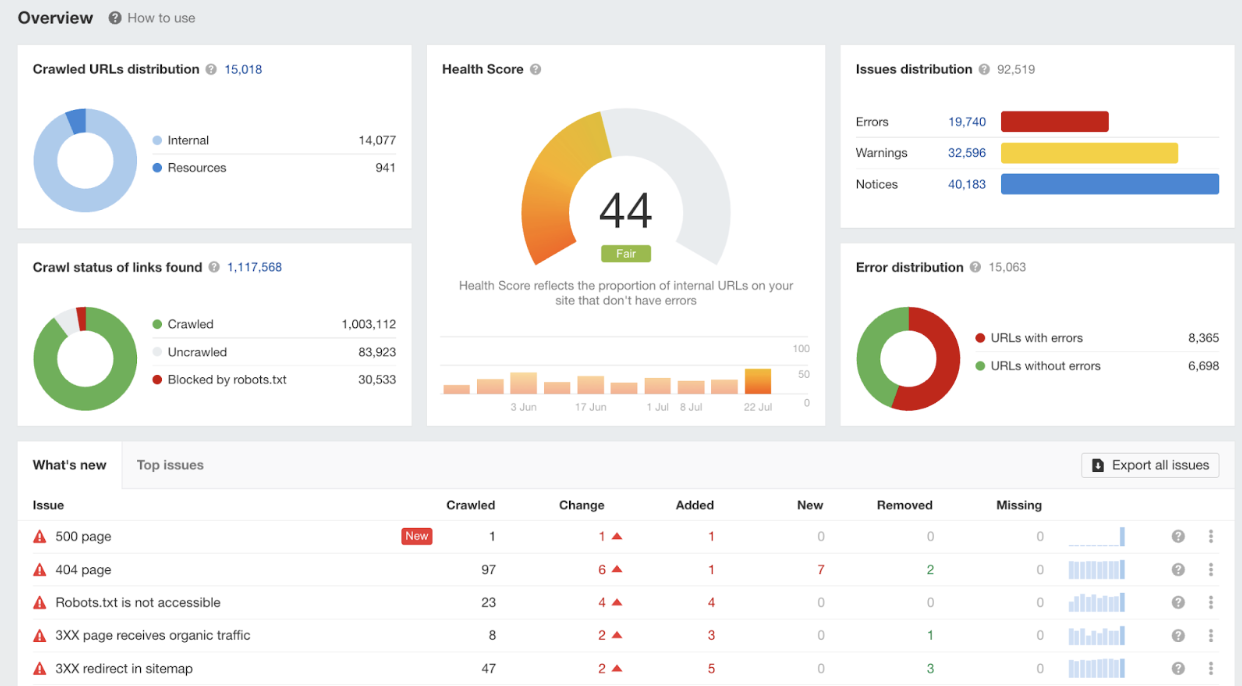
If you have any tools in your arsenal like Ahref’s or SEMRush, you can set up recurring crawls to get a holistic view of your site health and things you can do to improve it. These tools sort issues on priority by default so you’re always served high-impact opportunities first.
3. Perform Targeted Keyword Research
Keyword research is both an art and a science. If you’ve never used a keyword research tool before, you might want to consider reaching out to a contractor the first few times to get a sense of what proper keyword research looks like.
This is a critical part of your optimization efforts. Picking the right keywords is a must as each one warrants different kinds of actions and changes. You’ll want to perform keyword research for each of your priority pages and any future content you chose to pursue in efforts to expand non-branded terms. Some pages you might want to focus in on are:
- Homepage
- About us
- Contact information
- Services
Getting your top-level pages properly aligned to both local and national keywords will provide you the best of both worlds. Once you identify the proper keywords, you can decide where to put the local variations vs the national. For example, you might want to add a local flair to elements like title tags to ensure higher click through rates for local, higher intent searches if you rely on your geographic location.
4. Create a Web Of Content With Internal Links
You want to create synergy between content that relates well to each other. This creates a web of content easy for search engines to explore and repurpose in search results. It also allows for a flow of authority from top-level pages to pages that may be a little deeper on your site. Creating efficient pathways to these pieces of content will increase the frequency of crawling, thus improving your organic visibility to these pages.
This is another layer to the pillar-page and cluster model we talked about before. Consider the following image:

This image represents the different areas of a site and how there’s clear separation between one section and another. Creating overlapping connections between one idea and another adds more doors for search engines and users to open. Your content is only valuable if people can find it.
Adding and not over-adding internal links is critical. You want to be implicit with internal links and avoid any spammy tactics like walls of links to create clear connections that either tie two similar topics together or provide a clear path forward for the user to move down the funnel.
5. Focus on Site Architecture & User Experience
You might notice in the screenshot above that the architecture of that example site is a bit all over the place. Focusing on how your site is structured is essential. You want to make sure you have all the necessary top-level pages well-positioned and easily discoverable.
Creating a natural flow of information through website architecture isn’t necessarily a straightforward task since viewing a website in this way isn’t very common unless you’re an SEO and have the right tools.
User experience is more about the feeling someone gets as they explore your site. Is it engaging? Are there interactive elements? Is it fast? These are all questions you should be asking yourself. There are an unfathomable amount of website out there so being different has become difficult.
Don’t fall into the same templates as other sites and make sure to measure your user experience with Google Search Console.
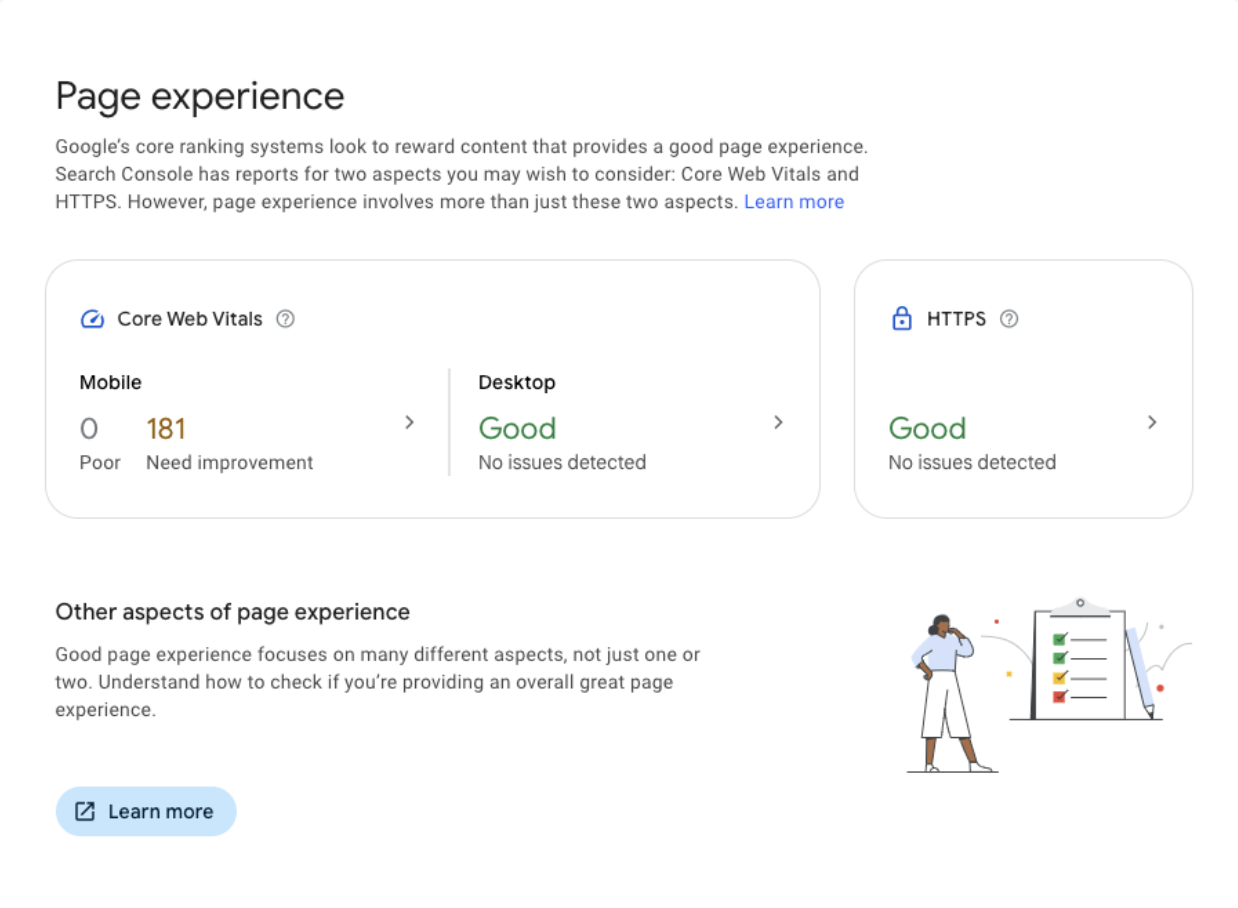
Google Search Console has a page experience report that incorporates elements like speed (core web vitals) so you can understand how Google views your website experience at a baseline. You can achieve a better and deeper understanding of how users interact with elements of your site by using tools like HotJar or Microsoft Clarity.
6. Implement Relative Healthcare Structured Data (Schema)
Schema is critical for healthcare websites. It helps search engines understand your content better and can lead to improved search visibility and overall richer search rankings. If you have a healthcare site absent of structured data, you’ll want to look to implement the following where applicable:
- Organization: This is foundational for any website and is a great starting point for providing more information about your healthcare business.
- LocalBusiness: If you operate at a physical location, implementing LocalBusiness schema will help with local rankings and geographical-based searches.
- ContactPoint: This simplifies all your contact information like phone numbers, emails, addresses, and social media.
- FAQ: FAQ schema is reserved for healthcare and high-authority government sites so take advantage of it if you can. This simplifies any question-focused content and is a great tool to have in the era of answer engines and AEO.
- HowTo: If you have any step-by-step guides for health-related issues, procedures or treatments, you can utilize this schema to become eligible for rich results.
Make sure to focus on the baseline information (Organization/LocalBusiness) before moving into the more complex schemas. Getting the basics implemented should show you some improvements and you can gauge the effectiveness of continuing to implement schemas beyond basic business information.
Brief Overview of SEO Ranking Factors
The topic of SEO ranking factors could be its own very lengthy post but it’s impossible to cover SEO importance of an industry without first pointing out and acknowledging SEO ranking factors. In the paragraphs below I will cover the two main buckets on-page and off-page SEO. This isn’t the end of the list in terms of ranking factors but as a baseline we want to have an understanding of the types of elements that go into a search engines algorithm to determine appropriate organic rankings.
On-Page Ranking Factors
On-page ranking factors speak to…you guessed it…the elements you find on the page. This is by no means an exhaustive list but this gives you an idea of the elements you should be concerned with from a basic SEO perspective.
1. Title Tags
Title tags are one of the most important ranking factors you can prioritize. The title tag provides a signal to search engines and users about where and how your content should be ranked. Prioritizing your targeted keywords in your title tag is a great way to ensure your content is ranked in the appropriate category.
2. Header Tag Structure
Header tag SEO is an effective way to expand the number of keywords a single page can rank for. Ranking for secondary keywords is a great method for receiving supplemental traffic. When you plan accordingly, the traffic generated from a single post can be exponentially larger than your original targeted volume.
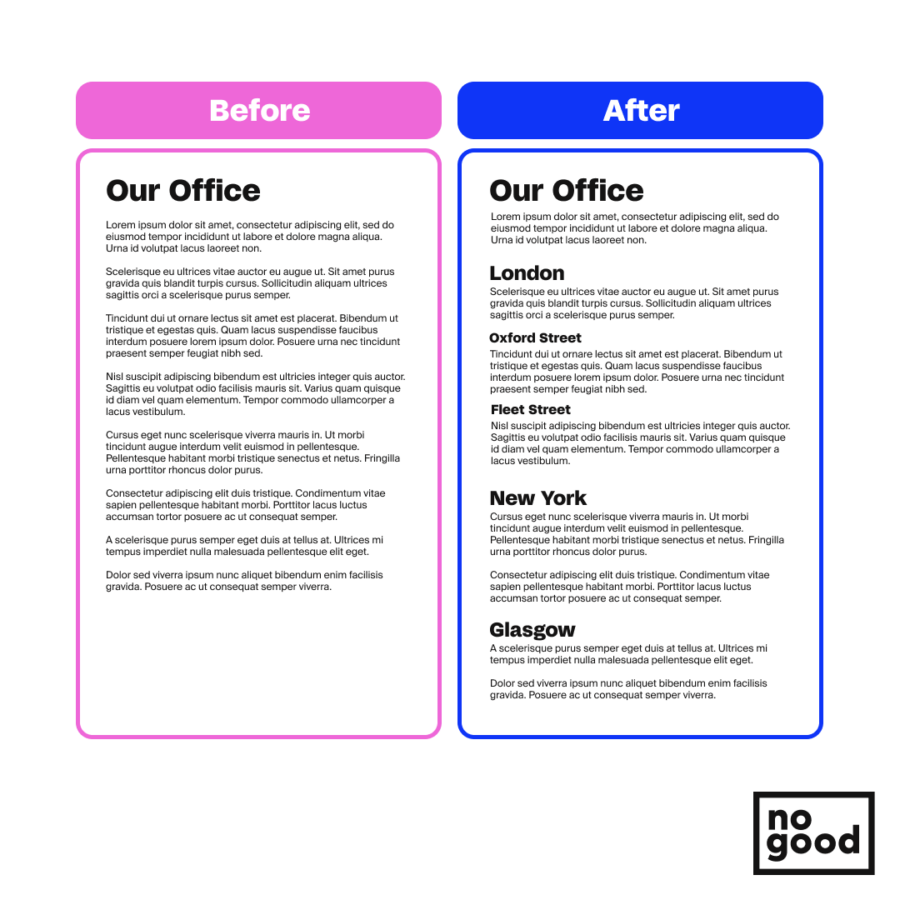
3. Page Experience
Page experience, often referred to as page speed, is now a ranking factor and likely one that will increase overtime. Google released their Page Experience update which called for sites and webmasters to optimize their site for “Page Experience”. This essentially broke down into three smaller categories that all relate back to speed.
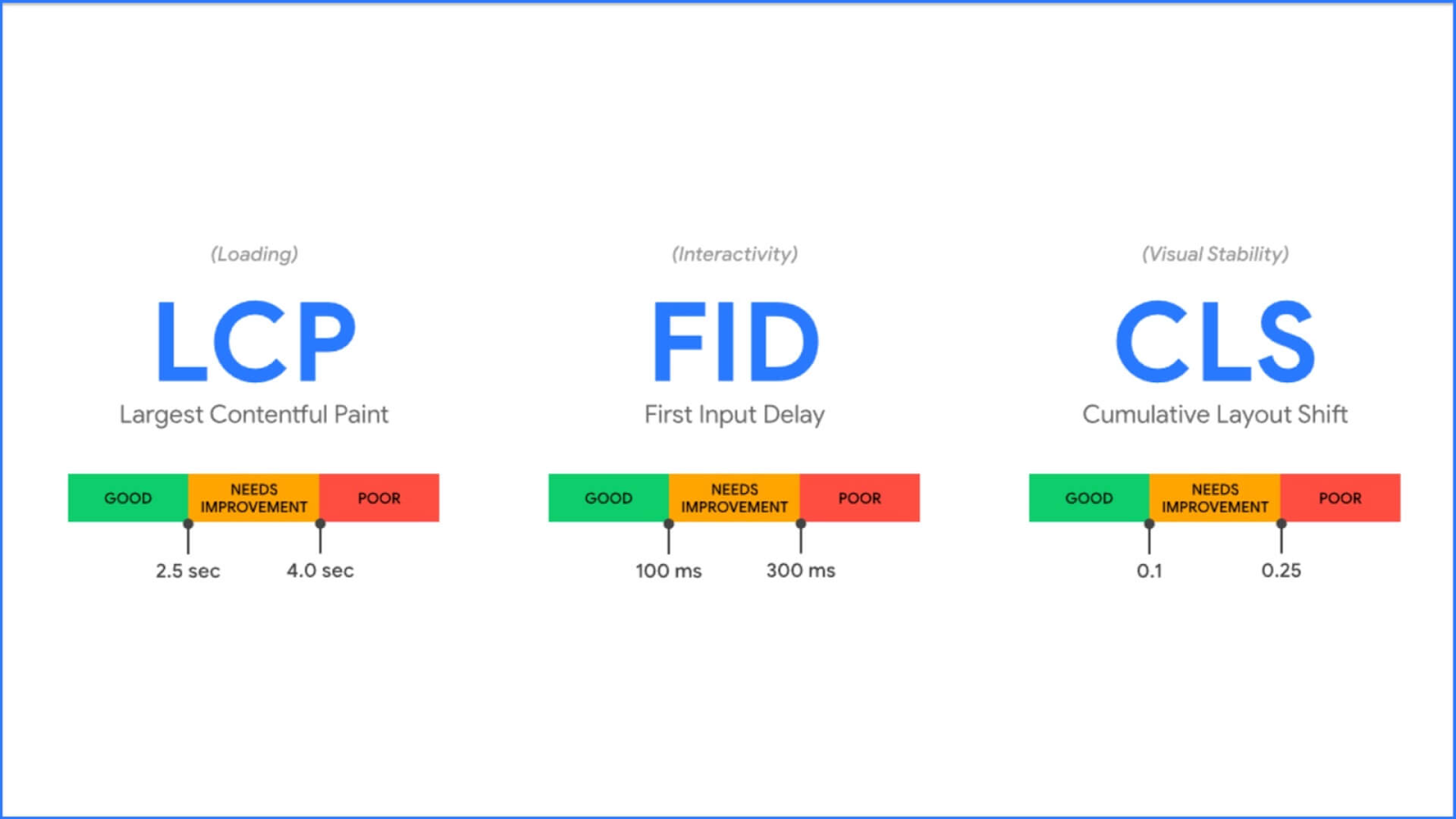
4. Mobile Friendliness
Mobile friendliness means a lot of things (content sizing in viewport, responsiveness, text size, tap targets, etc.) but we should be focused on the mobile experience as it relates to our buyer persona. Is your buyer persona someone who can easily navigate your site and accomplish a task? Have you ever sat down with a customer and asked them to perform a website task?
Off-Page Ranking Factors
Off-page ranking factors are a little less obvious and some have more weight than others. This doesn’t mean these factors should be deprioritized compared to the things more in your control like on-page factors. These are just important and authoritative factors can go a long way in terms of organic ranking ability.
1. Backlinks/ Referring Domains
Backlinks are a simple signal that people are referencing your content in their own work. The more insightful/useful the content you publish, the more likely you are to receive backlinks from authoritative sources. This assists in your ability to rank as it shows a sign of trustworthiness.
2. Site Authority
Very closely related to backlinks is site authority. This can be made up of a few different things but many SEO’s associate domain authority score and number of backlinks to overall site authority. This metric can be used to identify likeness to rank for particular terms and can even influence your content campaign strategy.
3. Relevance
Are you a sock company writing content about healthcare economics? Because that wouldn’t be very relevant. Relevance is underrated. With the new release of the Google Helpful Content Update, relevance is taking a front seat. In order to influence and provide value, it is assumed that your site would need to operate in the general industry you’re attempting to target. Local results are getting even better now and can understand when a result may not be in a local area.
4. E-E-A-T
Again, closely related to relevance, EEAT stands for experience, expertise, authority, and trustworthiness. This is a methodology that can be used to sum up a lot of the off-page ranking factors we’ve discussed so far. This is all-encompassing and is built on many different factors, many of which are not known by SEOs. Not that there aren’t any theories….
Partner With An Expert in Growth
If you’re looking for a foundation or need to right the ship, implementing a foundational SEO strategy could be your north star. Using the above guide, we have no doubt that you can build a comprehensive and successful healthcare SEO strategy.
If you’d like a more comprehensive seo approach or would like a partner to assist in your growth goals, contact us anytime.






